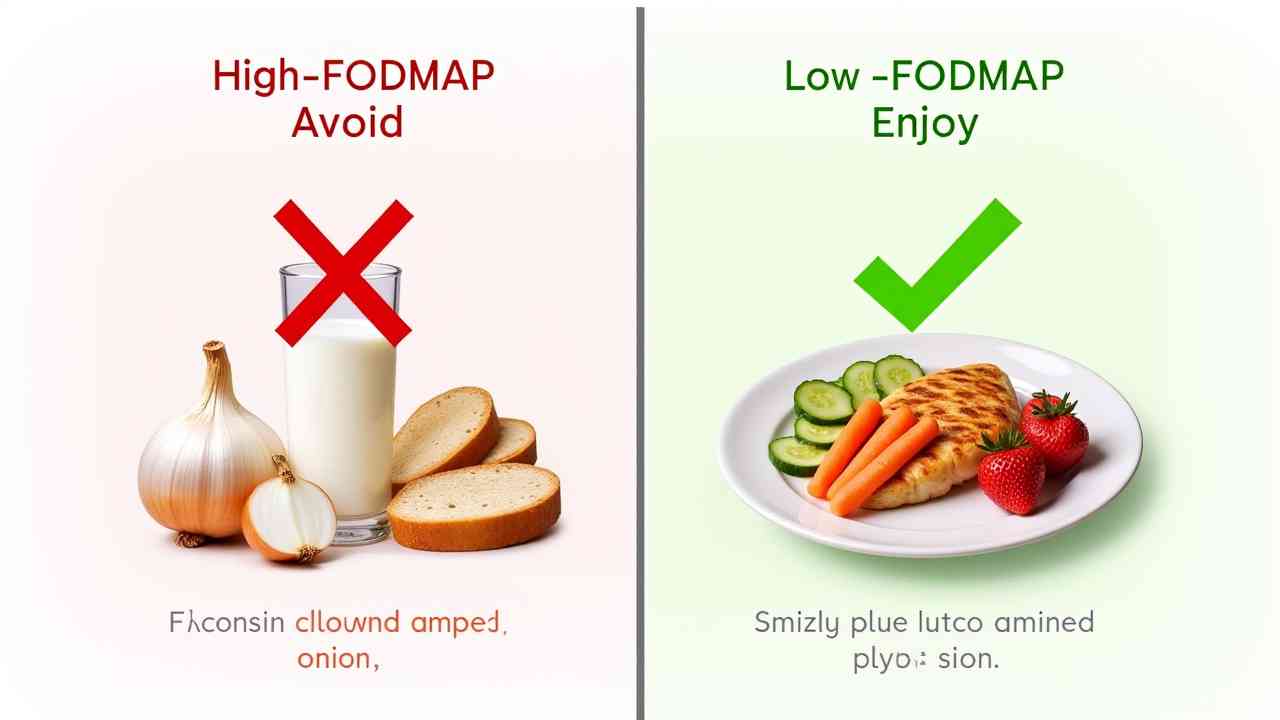
🩺 A Guide to the Low-FODMAP Diet (Food List & Plan)
🩺 A Guide to the Low-FODMAP Diet (For Digestive Relief) 🩺
❗ CRITICAL MEDICAL WARNING: The low-FODMAP diet is a complex, short-term diagnostic tool. It is not a forever diet. It must be undertaken with the guidance of a doctor or a registered dietitian who specializes in digestive health. This guide provides a general overview and is not a substitute for a personalized medical plan or a complete food list PDF.
If you suffer from Irritable Bowel Syndrome (IBS), you are familiar with the pain of bloating, gas, and cramping. Finding the cause can be frustrating. The low-FODMAP diet is one of the most effective, science-backed methods for identifying your specific food triggers. It is a journey of discovery for your gut.
This guide will explain what FODMAPs are. We will cover the three crucial phases of the diet. Let's start your path to a calmer, happier gut. ✅
🤔 First, What Exactly Are FODMAPs?
FODMAP is an acronym. It stands for Fermentable Oligosaccharides, Disaccharides, Monosaccharides, and Polyols. These are specific types of short-chain carbohydrates. They are poorly absorbed in the small intestine.
When these carbs reach your large intestine, the gut bacteria there rapidly ferment them. This fermentation process draws in water and produces gas. In people with a sensitive gut, this leads to the classic IBS symptoms of bloating, pain, gas, and diarrhea or constipation.
- What Are the Three Phases of the Diet?
The low-FODMAP diet is a temporary process, not a permanent lifestyle. It has three distinct phases. You must follow all three for a successful outcome.
1. The Elimination Phase: For a period of 2-6 weeks, you will strictly avoid all high-FODMAP foods. This allows your gut to calm down and your symptoms to resolve.
2. The Reintroduction Phase: This is the most important part. You will systematically reintroduce high-FODMAP foods, one group at a time. This helps you to identify your specific triggers.
3. The Personalization Phase: Once you know your triggers, you can create your own personalized, long-term diet. You will only avoid the foods that you know cause you problems.
🚫 What Foods Are HIGH in FODMAPs? (To Avoid in Phase 1)
The list of high-FODMAP foods is long and contains many healthy items. This is why the diet is so tricky. Key foods to avoid include:
- Vegetables: Onions, garlic, cauliflower, and mushrooms.
- Fruits: Apples, pears, mangoes, and the delicious figs ("incir") of the Bursa autumn season. 🍂
- Dairy: Milk, soft cheeses, and yogurt ("yoğurt").
- Grains: Wheat, rye, and barley. This means most bread, pasta, and cereals.
- Legumes: Beans and lentils ("mercimek").
- Sweeteners: High fructose corn syrup and honey.
✅ What Foods Are LOW in FODMAPs? (To Enjoy in Phase 1)
During the elimination phase, you will build your meals around these safe foods. There are still many delicious options!
- Vegetables: Carrots, cucumbers, bell peppers ("biber"), and zucchini ("kabak").
- Fruits: Strawberries, blueberries, and oranges.
- Dairy: Lactose-free milk and hard cheeses like cheddar and feta ("beyaz peynir").
- Grains: Rice, quinoa, and oats (in small amounts).
- Protein: Meat, poultry ("tavuk"), fish, and eggs are all naturally free of FODMAPs.
The low-FODMAP diet is a powerful medical tool. It requires patience and a partnership with a healthcare professional. But it is one of the most effective ways to take control of your digestive health. 🧘♀️